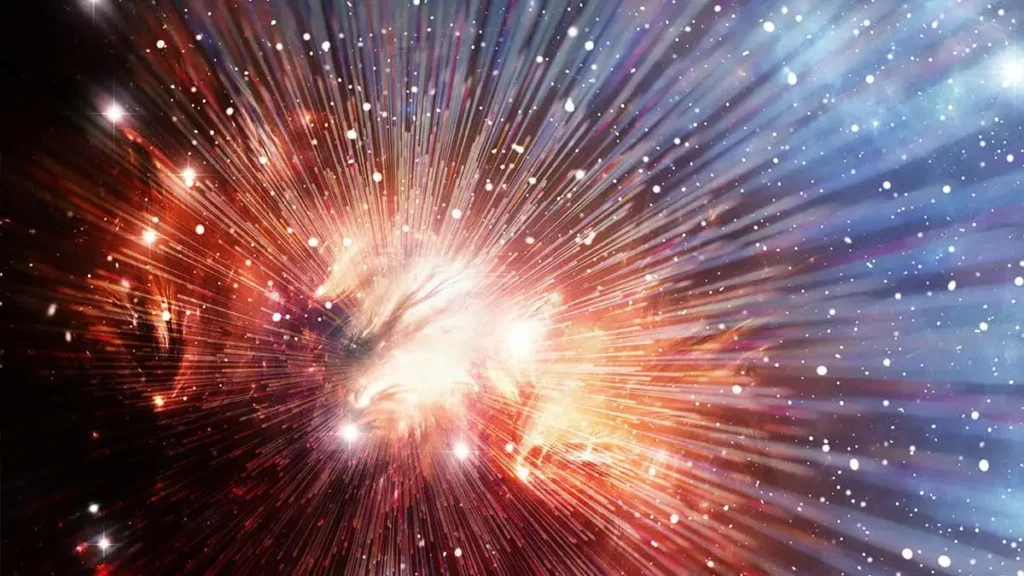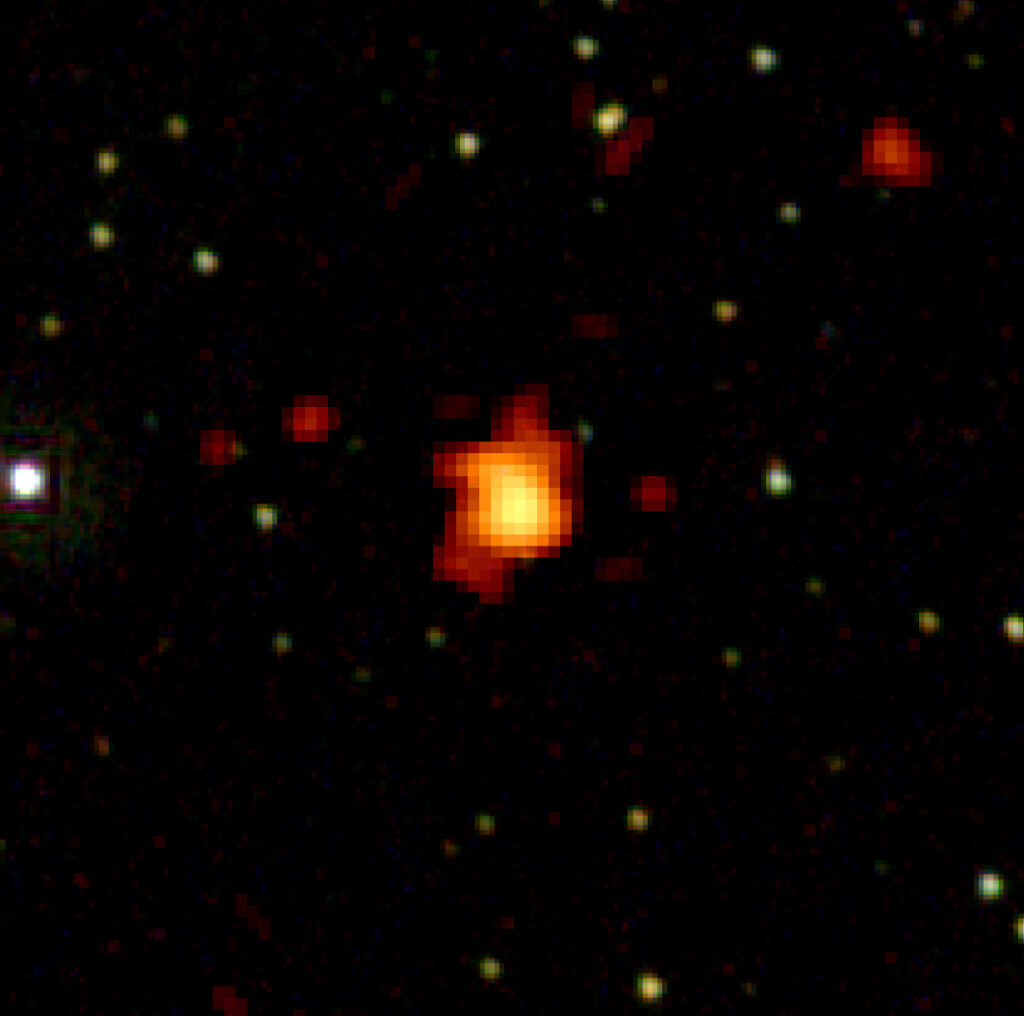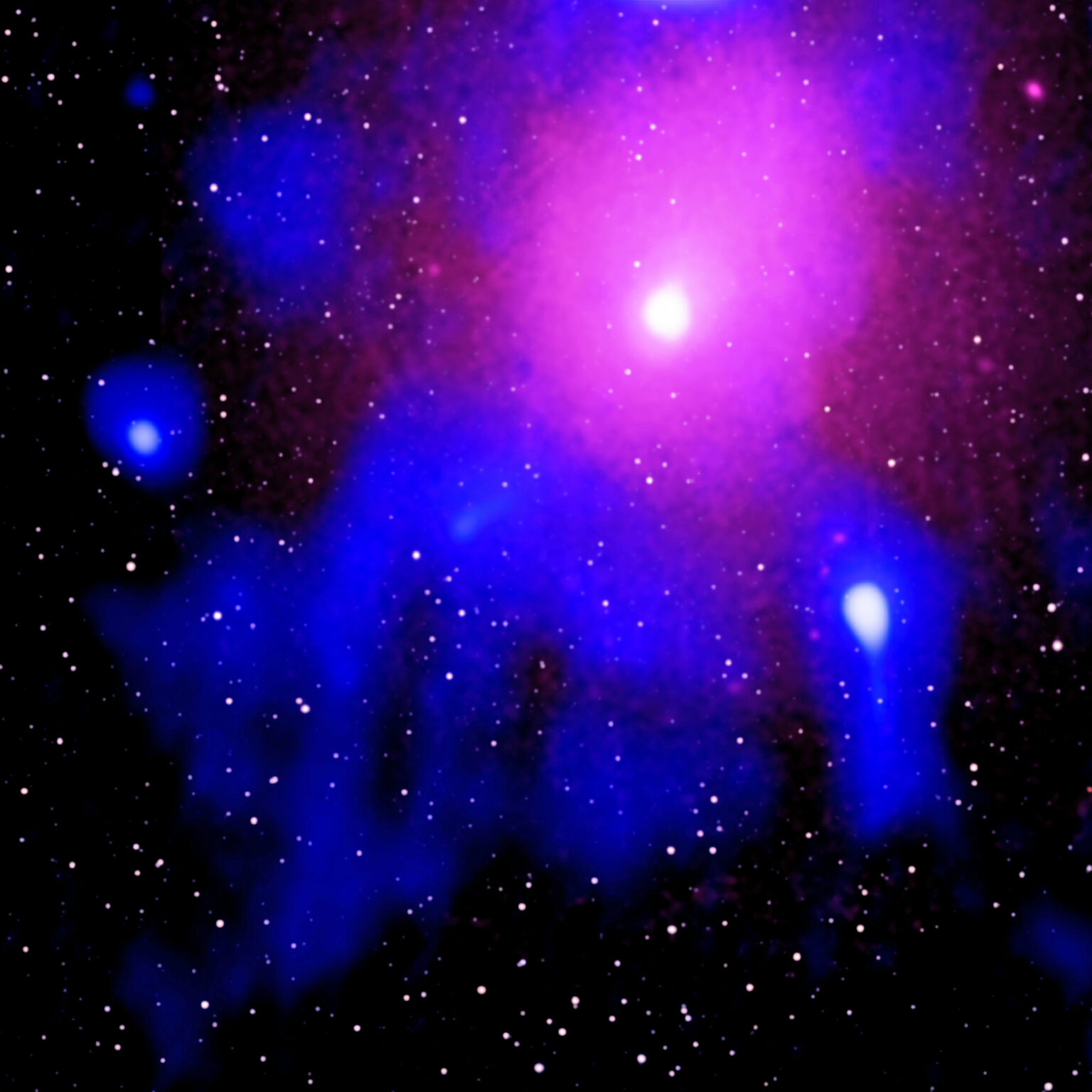The most powerful explosion known to mankind is, of course, the Big Bang, which resulted in the emergence of our universe. Approximate estimates of its capacity indicate that it could reach 1054 megatons in TNT equivalent.

The problem is that during this event, not only all the matter and energy of our world was formed, but also the space filled by them — and that space began to expand together with them. In order to adequately estimate the power of the Big Bang, it should be seen by an “outside observer” from a completely different spatial dimension. Unfortunately, it is impossible to get such information “from inside”.
Record gamma flashes
If we talk about explosions that have already occurred “within” our universe, then until recently gamma-ray bursts were considered as such. Most of them, according to scientists, are the result of the gravitational collapse of supermassive stars (100 times as massive as our Sun or more). One of these flashes, designated GRB 080319B, was recorded by the Swift satellite on March 19, 2008. Despite the fact that the distance to its source was 7.5 billion light years, it could be seen from Earth with naked eye for almost a minute. And in September of the same year there was an even more powerful flash GRB 080916C. It took its light 12.2 billion years to get to us.

During such events, energy, released into space in a matter of minutes, is tens and hundreds of times greater than that emitted by sun-like stars during their entire active existence (ie 9-12 billion years). But recently, astronomers have detected an even more high-energy event in our universe, which in addition took place not far from the solar system.

Explosion in Ophiuchus constellation
In 2016, the Chandra X-ray orbiting telescope photographed a giant cluster of galaxies in the Ophiuchusconstellation, about 390 million light-years from our Milky Way. The study of the obtained images showed that the intergalactic gas in the center of this cluster is unevenly distributed — there is a rather sharp jump in density, and the boundary between rarefied and denser matter has a concave shape.
Astronomers have already found similar structures in the central regions of other galactic clusters. Their origin is usually associated with the activity of supermassive black holes that “inhabit” the centers of the vast majority of large galaxies. These objects are associated primarily with the absorption of matter, but in fact the matter falling on a supermassive body emits a lot of energy (sometimes up to 40% of mass equivalent), and part of it takes part in creation of the so-called accretion disk and interaction with magnetic fields, and in the process some of that matter is actually ejected back into space in the form of jets — narrow beams of high-energy particles, the speed of which is close to the speed of light.

But as for the cluster in the Ophiuchus, scientists initially came to conclusion that such an explanation does not fit here. The fact is that the “density waves” associated with jets from massive black holes are about a thousand or tens of thousands of light years in size. In this case, the found structure extends for 1.5 million light years, and is at a distance of 1.8 million light years from the center of the cluster. Calculations show that the energy needed to form it is five times more than the most powerful black hole flash.
However, after a more detailed study of additional information collected by the XMM-Newton satellite, as well as by ground-based radio telescopes MWA and GMR, astronomers had to reconsider their findings. The analysis showed that in the past, the Ophiuchus cluster did experience a powerful surge in the activity of a supermassive black hole at the center of one of the galaxies. This event occurred at least 240 million years ago and can now be considered the largest energy release since the Big Bang. However, unlike gamma-ray bursts, which last for minutes or hours, this emission “stretched” for months, and possibly years. Therefore, most likely, even if at the time when electromagnetic radiation from this burst reached the Earth the astronomers had already existed here, they would not have immediately realized that they were dealing with a huge universal cataclysm. And in the absence of X-ray and radio telescopes, it could easily go unnoticed.




